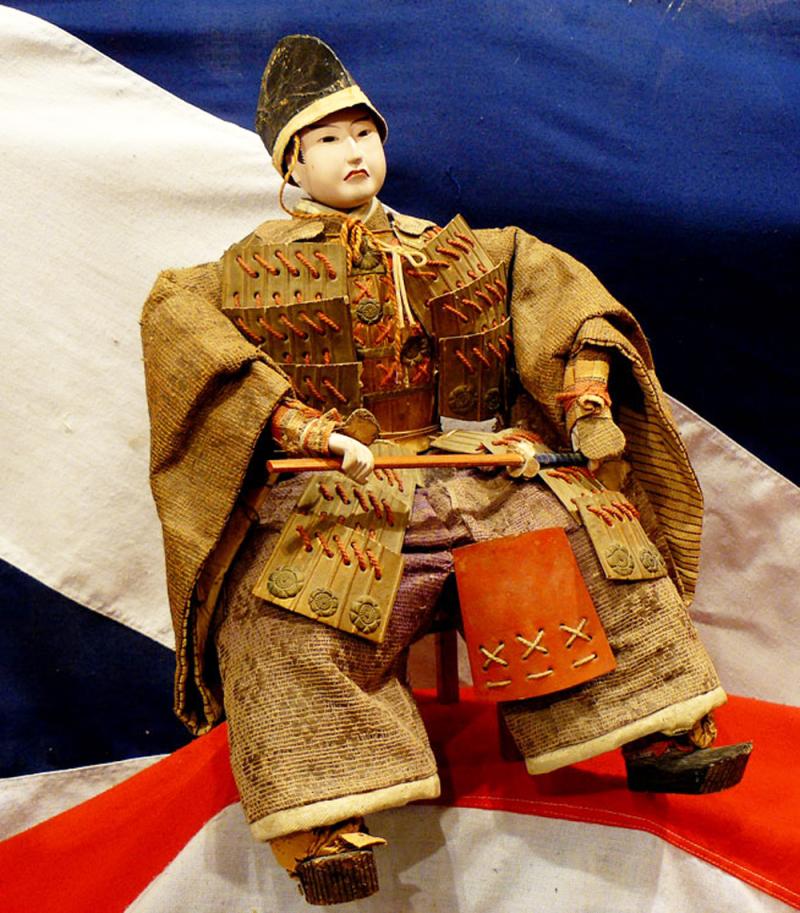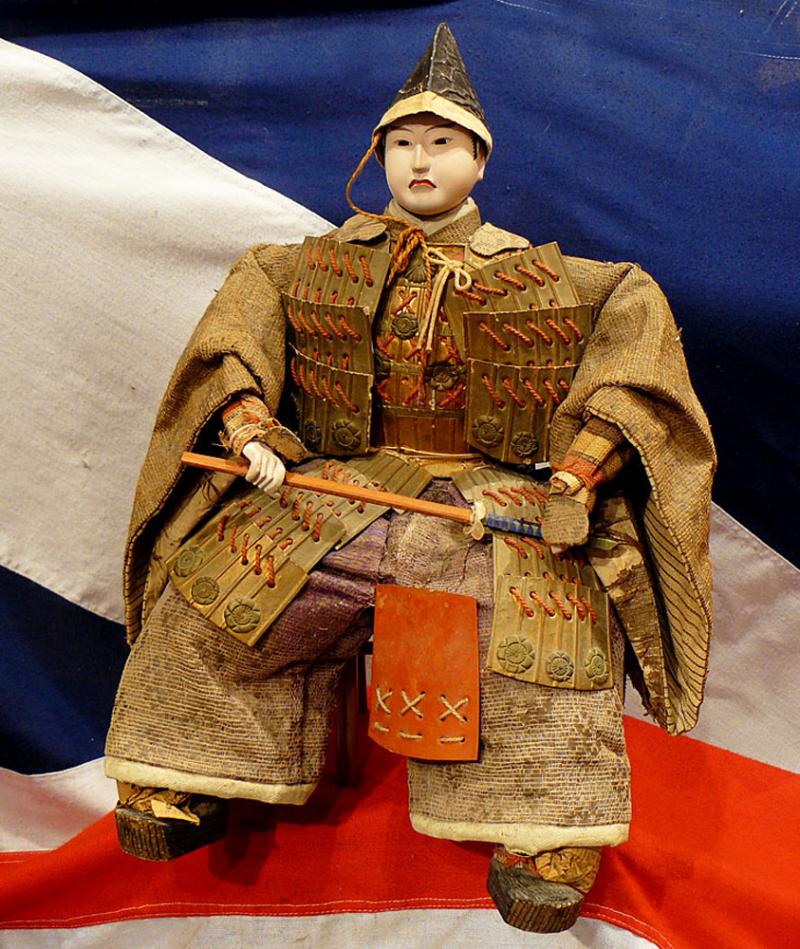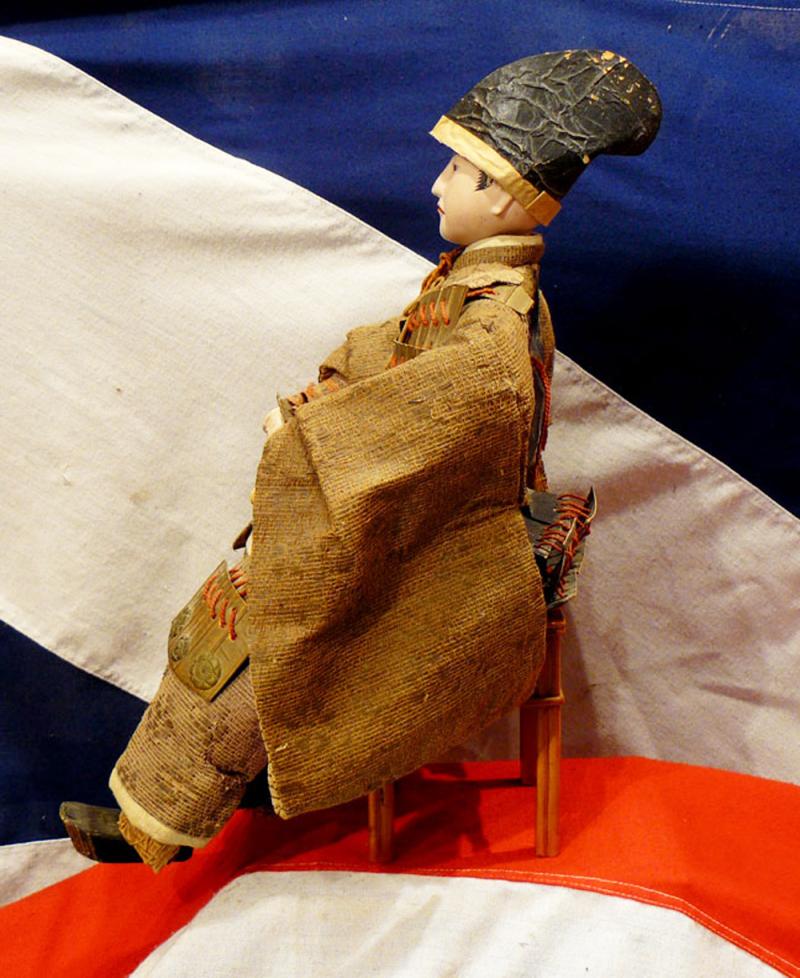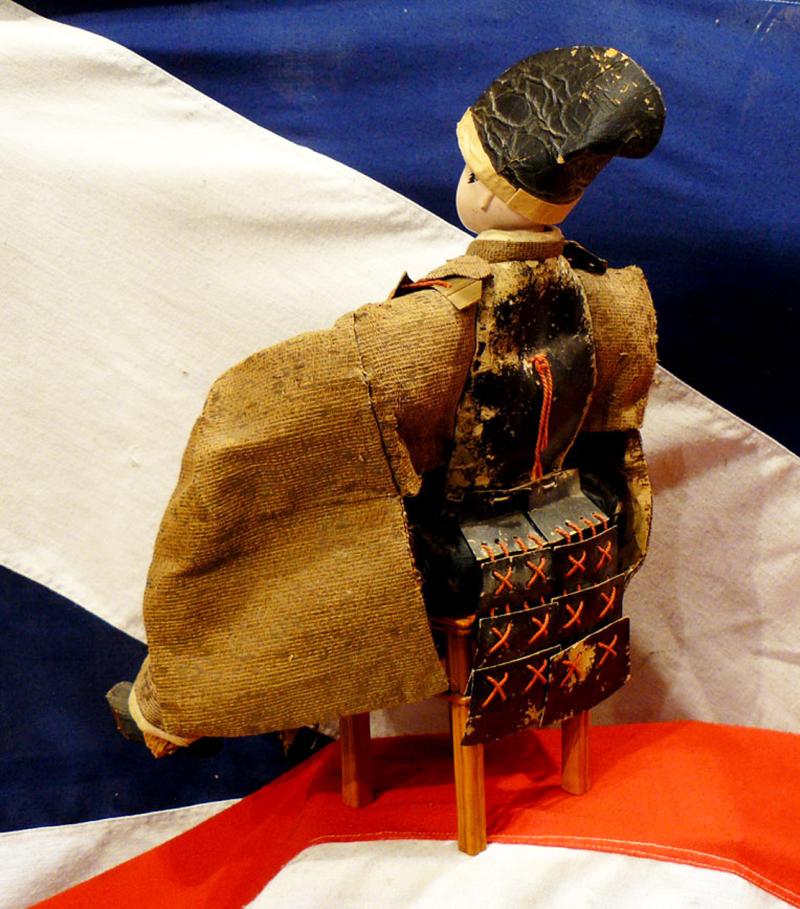A Superb Antique Edo Period Musha-Ningyo Samurai General Warrior Doll. A Uniquely Japanese Art Form Representing The Legendary Samurai
Adorned with full traditional miniature armour of lacquerwork and lacings and court cap jingasa and damask silk clothing, he is holding a katana. He is seated on a traditional stool. Warrior dolls also known as musha-ningyo are very popular as fine Japanese traditional works of art among Western collectors. Embodying the martial spirit of the samurai, these figures are decked out in full military regalia with lacquered armour, weaponry. They frequently represent very specific historical characters and are a fascinating window into Japan’s rich military past. There may be a continuity in the making of the dogū, humanoid figures, by the ancient Jomon culture in Japan (8000-200 BC) and in the Haniwa funerary figures of the subsequent Kofun culture (around 300-600 AD). Expert Alan Pate notes that temple records refer to the making of a grass doll to be blessed and thrown into the river at Ise Shrine in 3 BC; the custom was probably even more ancient, but it is at the root of the modern doll festival or Hinamatsuri. There are various types of traditional dolls, some representing children and babies, some the imperial court, warriors and heroes, fairy-tale characters, gods and (rarely) demons, and also people of the daily life of Japanese cities. Many have a long tradition Musha, or warrior dolls, are usually made of materials similar to the hina dolls, but the construction is often more complicated, since the dolls represent men (or women) seated on camp chairs, standing, or riding horses. Armor, helmets, and weapons are made of lacquered paper, often with metal accents. There is no specified "set" of such dolls; subjects include Emperor Jimmu, Empress Jingu with her prime minister Takenouchi holding her newborn imperial son, Shoki the Demon-Queller, Toyotomi Hideyoshi and his generals and tea-master, and fairy-tale figures such as Momotaro the Peach Boy or Kintaro the Golden Boy. In the nineteenth century ningyo were introduced to the West.
Doll collecting has since become a popular pastime in the West. Famous well known collectors from the West include individuals such as James Tissot (1836–1902), Jules Adeline (1845–1909), Eloise Thomas (1907–1982), and Samuel Pryor (1898–1985). During the Meiji period, three men became pioneers in collecting ningyo, Shimizu Seifū (1851-1913), Nishizawa Senko (1864–1914), and Tsuboi Shogoro (1863–1913). The three men are referred to as "Gangu San Ketsu" (the three great toy collectors). They introduced a systematic approach to collecting ningyo in an effort to preserve and document the various forms of ningyo. Shimizu, an artist and calligrapher, put his artistic ability to use by creating an illustrated catalog of his own collection of 440 ningyo dolls. The catalog was published in 1891, under the title Unai no Tomo. Nishizawa, a banker, gathered a significant collection on hina-ningyo. He was an active researcher, collector of stories, documents, and information relating to the development of hina-ningyo during the Edo period. Nishizawa’s son Tekiho (1889–1965) inherited his collection but a great portion of the collection was lost in the Kanto earthquake of 1923. Tsuboi, founder of the Tokyo Anthropological Society, was the most trained of the three, and he brought a scientific element to the collecting of ningyo. Dolls have been a part of Japanese culture for many years, and the phenomenon of collecting them is still practiced. Many collections are preserved in museums, including the Peabody Essex Museum, Kyoto National Museum, and the Yodoko Guest House.
The doll is similar to the work of Maruhei a famous Japanese doll artist from Kyoto
Dimensions: 17.5 inches high
Condition: The doll is in very good condition according to age and with wonderful antique taste. Some wear and fading to fabric in places.
Code: 24815
1595.00 GBP






